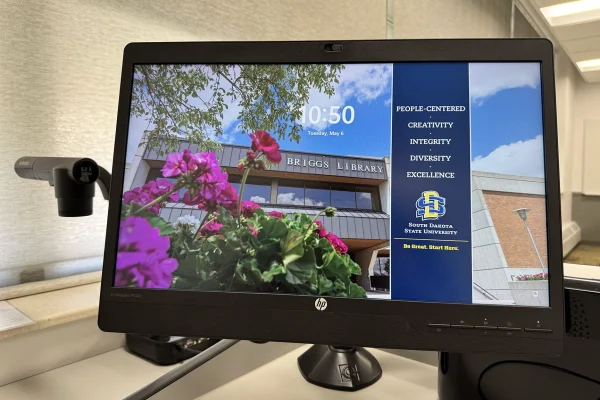Winter weather: Surviving the elements on the road
November 11, 2002
Tanya Marsh
As the holidays approach and students travel to visit family and high school friends, winter weather plays a deciding factor on whether or not trips are made.
Snow and ice make driving more dangerous than usual, but there are tips and strategies to help drivers stay on the road and in control.
One of the major factors in being prepared for winter driving is simply having your car in good condition.
According to the Car Talk web page [http://cartalk.cars.com/Info/ WinterDriving], winter drivers should begin with a tune-up to check hoses, belts, wires, etc. The battery should also be checked, since it takes more power to start your car in the cold weather.
The folks from Car Talk also recommend checking the coolant and fixing leaks in this department, since cars can still overheat in the winter.
Drivers can consider installing winter windshield wipers for more power for clearing snow from their windshields.
Car Talk also had suggestions for maintaining traction. Rear-wheel drive cars may benefit from sandbags in the trunk, aligned with the rear axles. Snow tires are also helpful; while four snow tires would be the best, if only two are used, they should be put on the rear wheels.
A final car-prep tip from Car Talk was that of keeping the gas tank filled, for two reasons. If stranded, a full gas tank would power the car to keep its occupants warm for hours. The second reason is that nearly empty tanks collect condensation, which can harm the car.
This is advice was echoed on the Federal Emergency Management Agency (FEMA) site [http://www. fema.gov/hazards/winterstorms/winterf.shtm]. According to this site, the gas tank should always be kept at a half a tank at minimum.
A second important part of winter driving is the survival kit. Car Talk recommended a few necessities, such as an ice scraper, shovel, extra windshield washer fluid, and a cell phone.
The FEMA site had a more extravagant list, including a flashlight, batteries, first aid kit, pocketknife, medication, blankets, matches, jumper cables, games, and a bright flag. Also recommended were high-energy foods and plenty of water.
Sophomore nursing student Jecelyn Fast said that while her preparations for winter driving were fairly minimal, she did include a survival kit in her car.
“I had a survival bag in my trunk. There was candy bars, candles, matches?it was full of stuff,” she said. “I had a blanket and my snow boots in my trunk, and an emergency kit with Tylenol and all that stuff, and a flashlight.”
She said she feels such a kit is an important part of winter driving safety.
“Have a survival kit in your trunk. Just be prepared for all situations,” she said.
A third factor in winter driving is simple: knowing how to drive in winter.
One web site [http://www.nhtsa.dot.gov/hot/winter/winter2.html] advocates practicing winter driving skills during the day in an empty parking lot.
The site had several tips for safe winter driving. Drivers should steer into a skid. Also recommended is the knowledge of proper usage of the car’s brakes. Antilock brakes should simply be pressed in, but in older cars without antilock brakes, the pedal must be pumped.
Buckling up and slowing down are two other tips, along with sitting at least ten inches back from the airbag, taking a break from driving every three hours, and not drinking and driving.
The FEMA site offered advice to drivers heading into a wintry situation.
First, the site said winter drivers should dress warmly, in layers. If the car gets stuck, putting out a distress signal, such as a bright flag, and then staying in the car were recommended. The site also suggested moving around within the car to stimulate blood flow and running the engine for ten minutes out of every hour in order to keep warm.
Car Talk also had a few tips. Along with simply slowing down, the site encourages drivers to scrape the entire car, rather than simply a peephole, before setting off.
Sara Landau, a sophomore physics major, said this is some advice that she doesn’t generally follow. “I scrape the driver’s side well, but it’s a little sketchy on the passenger side. I do a peephole on the back,” she said. “It’s definitely not advisable, but you know, it’s cold outside!”





















